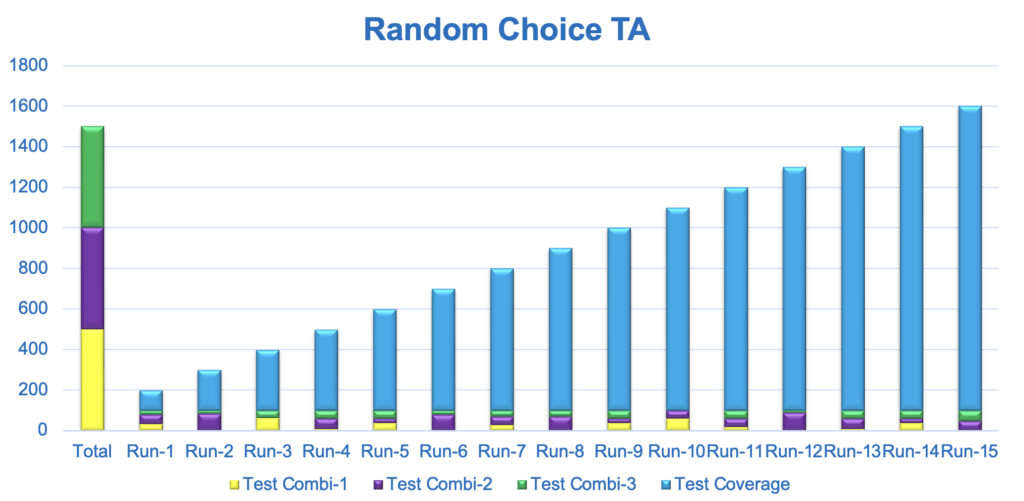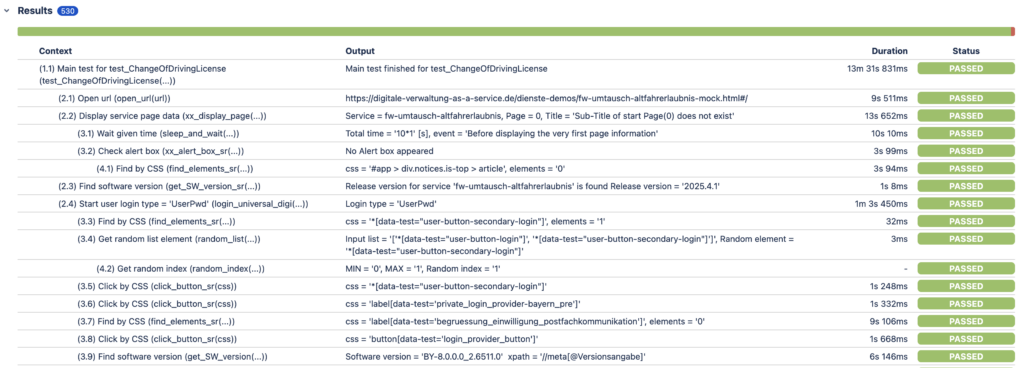
Test Automation
Each new product release (Increment) is additive to all prior releases (Increments) and must be thoroughly tested, ensuring that E2E product (Increments) work together.
(The Scrum Guide™)
Details

• Functional scope is continuously growing after each product release and regression tests can easily reach thousands or more TCs.
• Very large (infinite) number of test combinations create computational and time challenges.
• “Random Choice” test automation uses the “chaos” principle to guarantee sufficient test coverage distributing “infinite” number of test combinations over large but finite number of regular (daily) test runs including finite number of “Random Choice” test cases.


• System stability can’t be guaranteed without thousands of automated test runs.
• Test Automation is the only way to avoid exponentially growing test efforts and cost for manual regression tests with each new release.
• Test Automation can guarantee the maximum test efficiency at an affordable cost.


• Fully automated TC is roughly 5-10 faster than when it is executed by human.
• It can run overnight and during weekends and public holidays!
• Sufficient regression tests can only support the release cadence with Test Automation (e.g. weekly releases of total functionality).
• Load and stress scenarios can only be simulated with parallel running automated tests (functional load tests).


• No test engineer can be motivated long time to repeat the same test steps for the nth time.
• Regression tests easily become “boring and annoying routine chores” and subject to human errors.
• Test Automation brings back creativity and innovation into test activities.


• Test Automation results should be available and transparent in the used project management system for management and customers.
• Test Automation results should be available including detailed test steps and traces allowing quick error analysis.
• Transparency of TA results is the base for release decisions and mutual trust.

